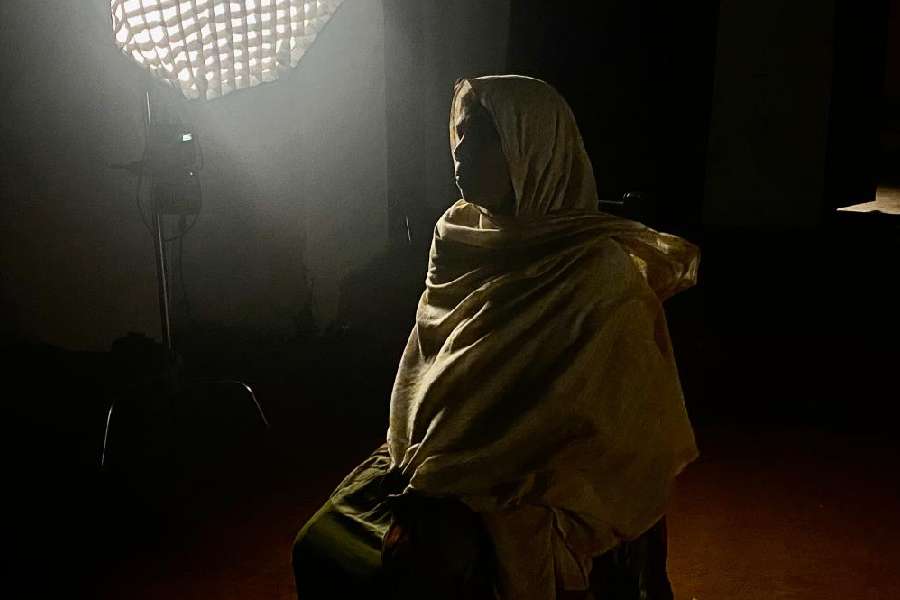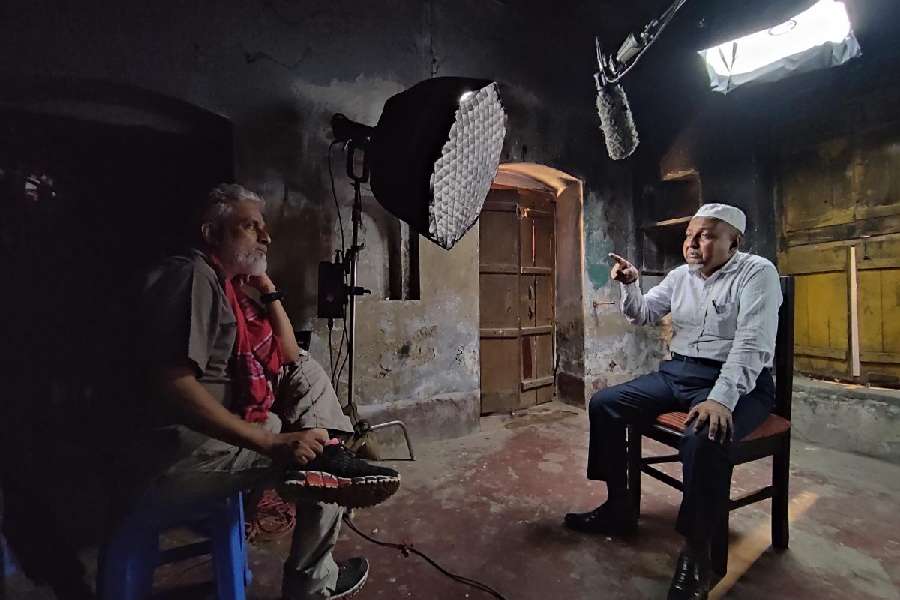Bay of Blood is a documentary on the mass slaughter unleashed on the citizens of East Pakistan by the Pakistani Army in 1971. An estimated three million people were killed in Operation Searchlight. The 2023 documentary by Krishnendu Bose weaves eyewitness accounts of the pogrom, archival footage and expert speak on declassified US government tapes. It also issues a warning on how anti-democratic forces can seed a genocide anytime, anywhere. Bose, who is known for his films on wildlife conservation and environmental justice, and has won several international awards for them, was in Calcutta recently for the screening of Bay of Blood at Nandan when Prasun Chaudhuri caught up with him. Here are excerpts from the interview.
Q Your domain expertise is environment and wildlife conservation. So this film is a digression?
Not at all. My films are always focused on people. They speak on behalf of people who are voiceless. Bay of Blood is a continuation of that effort.
Q What made you choose the topic?
When the 1971 massacre happened, I was an 11-year-old. It was May-June and I was visiting my maternal uncle’s home in Calcutta. I remember the influx of huge numbers of people from East Pakistan. They filled Sealdah station and the streets of the city. Some months later, the new nation Bangladesh was born. Later, I read about the tumultuous event in books such as Gary J. Bass’s Blood Telegram and Srinath Raghavan’s 1971: A Global History of the Creation of Bangladesh. In 2019, my wife Madhurima Sen Bose — who is also my partner at EarthCare, our film production house — reminded me that the 50th anniversary of the Bangladesh Liberation War was around the corner. Since she had roots in former East Bengal, she suggested we revisit the events of 1971. I landed in Dhaka around September-October that year to do some basic research. I met historians, writers and experts there and also travelled to smaller cities and villages to speak to eyewitnesses. I found their narratives shocking and disturbing. I realised the need for a film on the mass killings for a larger audience. I recorded the conversations and made a trailer based on those accounts and some archival footage.
Q And, your focus moved to the genocide...
Both the genocide and the Liberation War are entwined for people in South Asia. But, quite surprisingly, when I showed the 10-minute trailer at a broadcasters’ meet at Cannes, where I had gone looking for funding, I was taken aback. They’d never heard of the genocide in Bangladesh. They knew about the Nazi Holocaust and genocides in Cambodia, Rwanda and Bosnia, but not this. And this despite the fact that 3 million were killed and 4,00,000 women raped by the Pakistani Army and their local acolytes. About 10 million people were forced to take refuge in India. As a Bengali, I felt this was a kind of insult and I decided to make the film.
Q How similar was this event to the mass murders in Nazi Germany, Cambodia or Russia?
According to Daniel Ferstein, the genocide expert whom I interviewed for the documentary, all mass slaughters have local elements and they also follow a global template of hatred. He says genocide is not an event, but a process that develops over time. People are slowly marked, isolated and then butchered en masse. Pakistan didn’t suddenly decide to commit mass murder on March 25, 1971. The process began ever since East Pakistan came into being in 1947.

Q Any striking discoveries in the course of your research?
Soldiers everywhere are trained to kill people on the battlefield. But during Operation Searchlight, the Pakistani Army unleashed extreme brutality on unarmed civilians. They burnt people alive in boilers of jute factories, they tied pregnant women to vehicles and dragged them through streets and so on. Alongside the mass extermination, the soldiers carried out mass rape. Their commanders brainwashed them into believing that Bengalis were an inferior race and the soldiers were ordered to impregnate as many women as possible with “superior blood” from West Pakistan. It was an effort to ethnically cleanse Bengalis.
Q In the documentary, eyewitnesses and family members of victims share harrowing accounts. Survivors of sexual assaults have also been interviewed. How did you convince them to face the camera?
I found that these people wanted to tell their stories. For some, it was the first time somebody had asked them to narrate their experiences. I was somebody from outside their country who spoke their language, felt for them and was keen on preserving their accounts. We rented an old dilapidated house in old Dhaka to record their experience freely and also to maintain consistency of location. Half the people were from Dhaka and half from remote areas of Chittagong and islands in the extreme southern region of Bangladesh. Some of them made overnight bus journeys and travelled a whole day in boats to meet us. For some interviews, we went to the United States. One of the US interviewees refused the travel reimbursement we offered, saying, “You are doing so much for us, how can I take payment from you.”
Q Why is this 50-year-old event still relevant?
The world has changed a lot in the last five decades, but the basic nature of human hatred hasn’t changed much. Intolerance has been rising across the world. The Bosnian genocide happened in the 1990s and at the moment two wars, Israel-Palestine and Russia-Ukraine, are happening. Ethnic cleansing hasn’t stopped. If you see Bay of Blood carefully you’ll notice that the culture of hatred in the wake of the mass killing can now be seen in many countries. The first signs often emerge as intolerance among people and the annihilation of democratic space by authoritarians similar to the Pakistani military dictator Yahya Khan. Citizens must be able to read
the warning signs in their own backyard and stand up in their own way against it. The basic template of genocide can be replicated again and again anywhere in the world.
Q You mean democracy is the best antidote to genocide?
To a large extent. However, an electoral democracy can also give rise to an autocrat who can slowly aid the process of mass slaughter. In Nazi
Germany, Hitler came to power electorally. So, citizens need to continuously monitor a healthy democracy in which the judiciary, educational and financial institutions, etc. enjoy autonomy. In other words, an ideal democracy can’t be taken for granted. Democracy is like a vulnerable child in need of protection. And tolerance for religion, caste, creed and diversity among citizens is a key aspect of a healthy democracy.
Q Towards the end of the film, Ferstein says the 1971 genocide failed and also succeeded. Could you elaborate?
When the country became independent despite such mass extermination by Pakistanis, the genocide was a failure. But the seeds of genocide and hatred planted by them kept growing successfully. Sheikh Mujibur Rahman along with his family was brutally assassinated within four years of Liberation, and later, the country had no democracy for years. Ethnic cleansing continued as the undercurrent of fundamentalism and intolerance seeded by the Pakistani Army still simmers
in their society.











